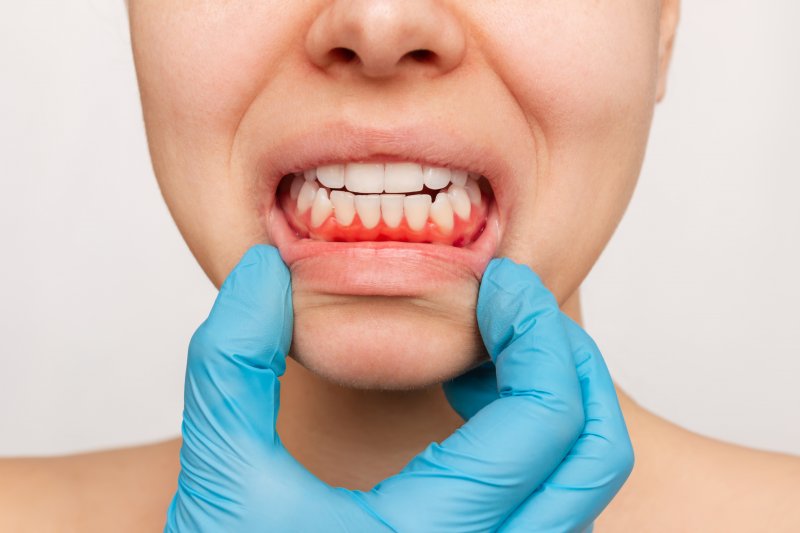
Gum disease is quickly becoming one of the most common oral health problems seen by dental professionals today. Impacting millions of Americans, its damaging effects can spell disaster for patients’ oral and overall health. But did you know this harmful infection can also take a toll on your facial shape? Keep reading to learn what can happen if you fail to receive treatment and what you can do to avoid looking much older than you really are.
What Kind of Effect Does Gum Disease Have on Facial Shape?
Gum disease is an oral health problem that forms when bacteria, plaque, and tartar attack the soft oral tissues that help hold your teeth in place. As it burrows into the gumline, it can cause swelling and bleeding as well as gum pockets to form, which is the separation of the teeth from the tissues.
As the infection worsens and spreads to the roots of teeth and the jawbone, it can lead to bone resorption and changes to your facial shape.
The jawbone requires continuous stimulation to remain supple and supportive; however, if teeth become loose because of advancing gum disease, it will cause them to fall out, leaving nothing behind to fuel the bone. What you are left with is a sagging facial appearance that is also referred to as “facial collapse.”
What Parts of the Face Can Be Affected?
It might seem as if only the jowls or cheeks are negatively impacted; however, different aspects of your facial shape can decline when dealing with gum disease, such as:
- The angle of your face: When tooth loss occurs, it’s common for your facial height to diminish. As a result, deeper vertical lines can appear next to your lips or under your nose.
- Bite: You will notice a change in your bite relationship, which means others might believe you are scowling when looking at them. You may appear unhappy all the time.
- Chin: Your chin may begin to rotate forward – a common change that creates an aging appearance.
- Lips: If you enjoyed plumper lips before, you may be surprised to see that they are thinner because they lack sufficient muscle and instead have greater wrinkles.
- Jowls: When the jawbone experiences resorption, your jowls will lack the necessary tissue and muscle to remain supple; instead, causing them to sag over time.
How to Avoid Changes to Facial Shape
When it comes to reducing your risk of poor facial shape caused by gum disease, you can:
- Develop good oral hygiene habits at home that place a strong emphasis on brushing and flossing, as this reduces the risk of developing gum disease.
- Seek professional treatment the moment you notice bleeding or swelling around your gumline.
- Inquire about advanced gum disease solutions, like scaling and root planing to minimize further damage and potential jawbone resorption.
Gum disease may be seen and treated by countless dentists throughout the United States, but it doesn’t have to be something your oral healthcare professional addresses. However, if treatment is necessary, you can entrust they will deliver safe and secure solutions to improve your oral health and facial appearance.
About the Author
Dr. Vincenzo Artino is a Lakewood dentist with a passion for helping individuals enjoy life with healthier, more vibrant, and longer-lasting smiles. Discovering his desire to enter the healthcare field at an early age, he completed his dental degree at the University of Colorado School of Dental Medicine before eventually taking over Lakewood Complete Dentistry.
It is here that Dr. Artino delivers exceptional service and care to residents living in and around the area, providing safe and effective solutions for all types of oral health problems. When treating a patient with gum disease, he and his team can utilize advanced technologies to improve the health of these soft oral tissues so that better dental health is achievable. If you are suffering from bleeding or tender gums, contact us at (303) 238-2800.
